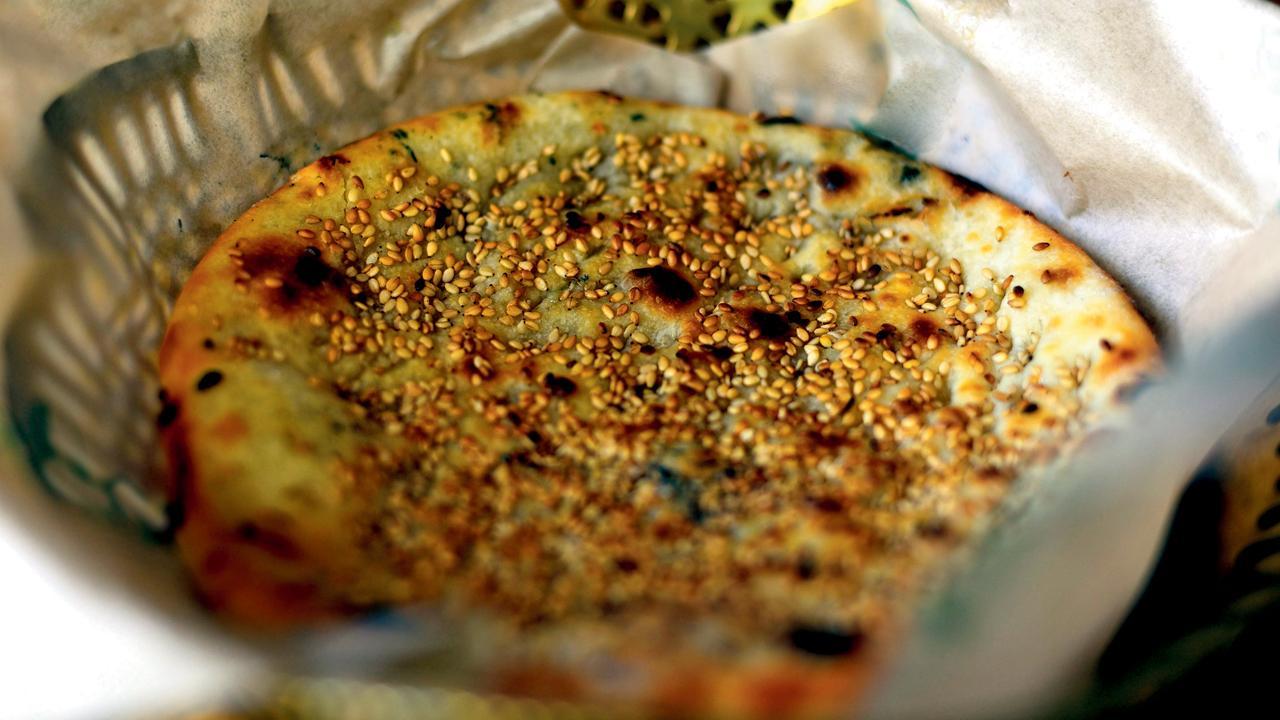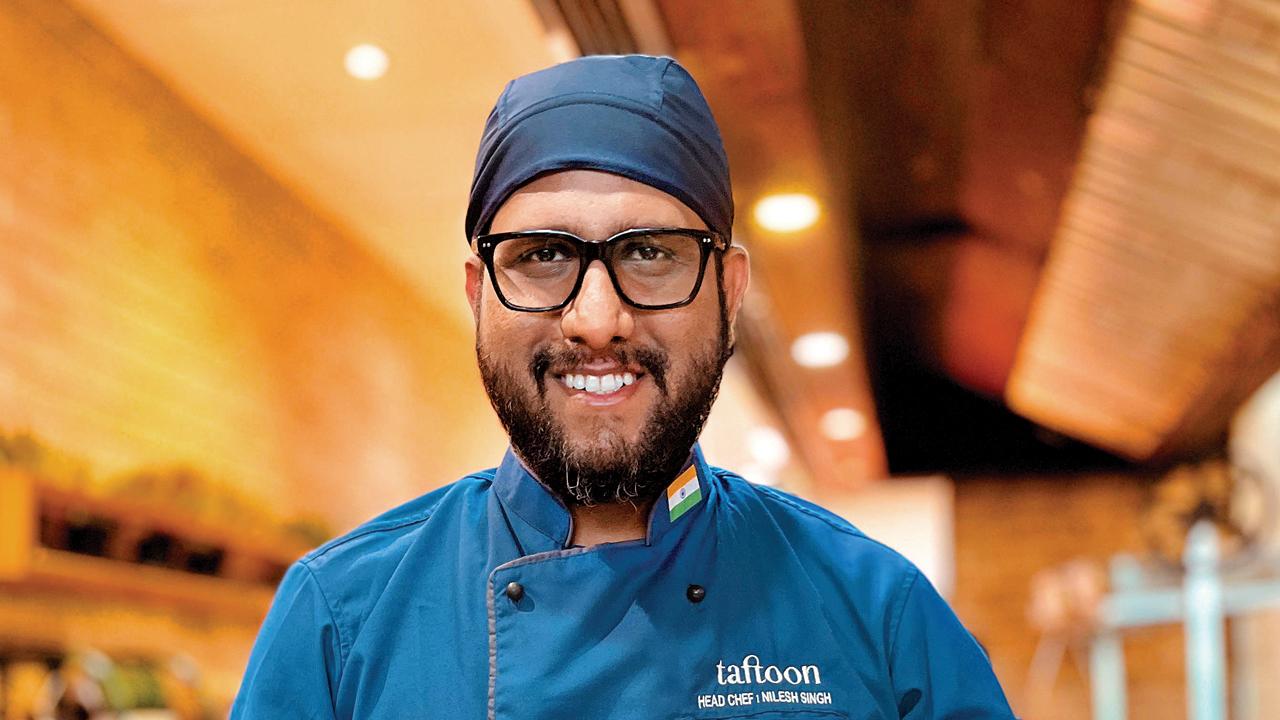Beyond chapati and naan, Indian breads made quickly and sans special equipment are a contrast in colours, flavours, and textures

Girda
Earlier this month, we chanced upon a version of roti we savoured by itself. Chopped onions were kneaded into the dough and red chilli powder was sprinkled on top; baked in a tandoor, it was nothing fancy but so full of contrasting flavours that it got us thinking of the many, many Indian breads.
From flat ones such as palak roti to koraishutir kochuri (the Bengali green peas stuffed puri), and of course the stuffed parathas in savoury and slightly sweet variations such as kulcha, chicken orotti, meen pathiri (thin rice flatbread with fish filling) and puran polis and khajoor ni ghari (fried flatbread with date filling)—the traditions are as endless as our kneads, and shapeshift every 100 kilometres.
ADVERTISEMENT
Girda
A Kashmiri favourite is the girda, which is much thicker than everyday rotis, and is loaded with sesame seeds and a generous dollop of desi ghee. This makes it moist and it can be had with practically any subzi or meat dish. “Girda holds cultural significance in Kashmiri cuisine and is an integral part of the region’s culinary heritage. It is served with traditional Kashmiri dishes such as rogan josh, dum aloo or in the multi-course wazwan,” Singh tells us. It is made of whole wheat, and we tried it with a meat curry, but the accompanying vegetarian photojournalist felt it would be perfect when dipped in chai. Ek noon
chai, ho jaye?
Akki roti

A wholesome meal for the health conscious, this is a hot favourite in Karnataka; Akki is the Kannada word for rice. Not to be confused with the Maharashtrian bhakri, which is made with rice flour and salt, akki roti has rice flour, coconut, leafy vegetables, and spices, and can be accompanied just by chutney. The Coorgi version is slightly different, home chef Smitha Kuttayya, tells us.

Smitha Kuttaya
It is made with cooked rice. “Being rice farmers, we always have surplus grain at home, in case someone comes visiting,” she says. “So our ancestors had several ingenious ways to use up leftovers. We knead up the cooked rice with rice flour and cook it like phulkas. It goes with practically everything, but I like it with a pork curry or a pumpkin curry,” Kuttayya tells us.
Dibba roti

Homes in Andhra Pradesh love waking up to this roti made of black gram and rice batter; some know it as Andhra minapa rotti. The word ‘dibba’ in Telegu means ‘stout’ or ‘plump’ and it looks more like an idli. It is best made in a heavy-bottomed, shallow kadai smeared with oil. The batter is poured into a neat circle and cooked on low heat. This makes dibba roti crunchy on the outside but soft inside. It is cut into wedges and served any kind of chutneys and avakaya pickle, widely made in the region.

Sumithra Kalapatapu
Variations are born by adding spices and herbs such as green chillies, ginger, curry leaves, asafoetida (hing), coriander leaves, crushed black pepper, and onions. “Rice is the staple in Andhra and hence, dibba roti is a popular variant,” says home chef Sumitra Kalapatapu. “Apart from chutney, we also love to have it with honey. On Saturdays, when we don’t cook full meals such as rice, rasam etc, we prefer quickly-made dibba rotis or upma.”
Onion and mirchi roti

Pic/Sameer Markande
We rolled into this delicious find at Copper Chimney. The menu stated that it is a staple in the pinds of Punjab. Shikha Nath, Culinary Director, tells us, “In the villages of Punjab, farmers lunch is a wheat roti with pyaaz (red onions), chopped chillies and fresh coriander, topped with homemade ghee. Wrapped in a muslin cloth or potli, they carry this simple rustic roti and enjoy it with a glass of lassi.”

Shikha Nath
The simplicity of the bread that defies dependency on gravy or subzi to complete a meal is what distinguishes it. Of course, it would only elevate a meal comprising a slow-cooked dal, or pindi chole. The ingredients are kneaded into the dough before it goes on the pan, ensuring delight in every bite.
Baquerkhani

There are versions of this Mughlai bread that traces its origins back to a Mughal general of the mid 1700s named Mirza Agha Baqer posted in Chittagong, now Bangladesh. Today, it is popular on the streets of old Delhi, Kashmir, and Dhaka. “Baquerkhani may not have a literal translation or specific meaning in common Kashmiri parlance but is recognised as a variant of Kashmiri bread,” says Gupta. “The tragic love story of Baqer Khan and the dancer Khani Begum inspired the bakers to name his favourite bread Baquerkhani.” The naan version of this maida preparation comes sprinkled with poppy seeds and is preferred with meat gravies. There is also a sweet version, which is thicker with a crunchy crust, much like a biscuit. Traditionally, it is had with tea or just by itself while breaking fast during Ramzan.
Taftan

Pics/Nimesh Dave
A breakfast staple in the valleys of Kashmir, this leavened flour bread features as zaffrani taftoon on the menu at Taftoon, which specialises in Grand Trunk Road cuisine. The 3,710-kilometre-long trade route started from Kabul in Afghanistan, passed through India and ends at Teknaf in Bangladesh, threading cuisine along the way. Chef Nilesh Singh tells us, “The origins of zafrani taftoon can be traced back centuries in Kashmir, however, it is influenced by the Persian original, given the use of saffron. The name taftoon is a Persian term for a type of flatbread. It continues to be enjoyed by locals and visitors alike.”

Nilesh Singh, Chef, Taftoon
The naan is made from maida, milk, yoghurt, eggs and saffron, baked in a clay oven and savoured with dastar-e-khaas, a spicy mutton preparation with a thin gravy, which it soaks up well. In some variations, you’ll find it sprinkled with nigella seeds (kalonji), sesame seeds (til), aniseed (saunf) and poppy seeds as well. Sometimes, it is flavoured with a small amount of cardamom powder and decorated with poppy seeds.
 Subscribe today by clicking the link and stay updated with the latest news!" Click here!
Subscribe today by clicking the link and stay updated with the latest news!" Click here!







